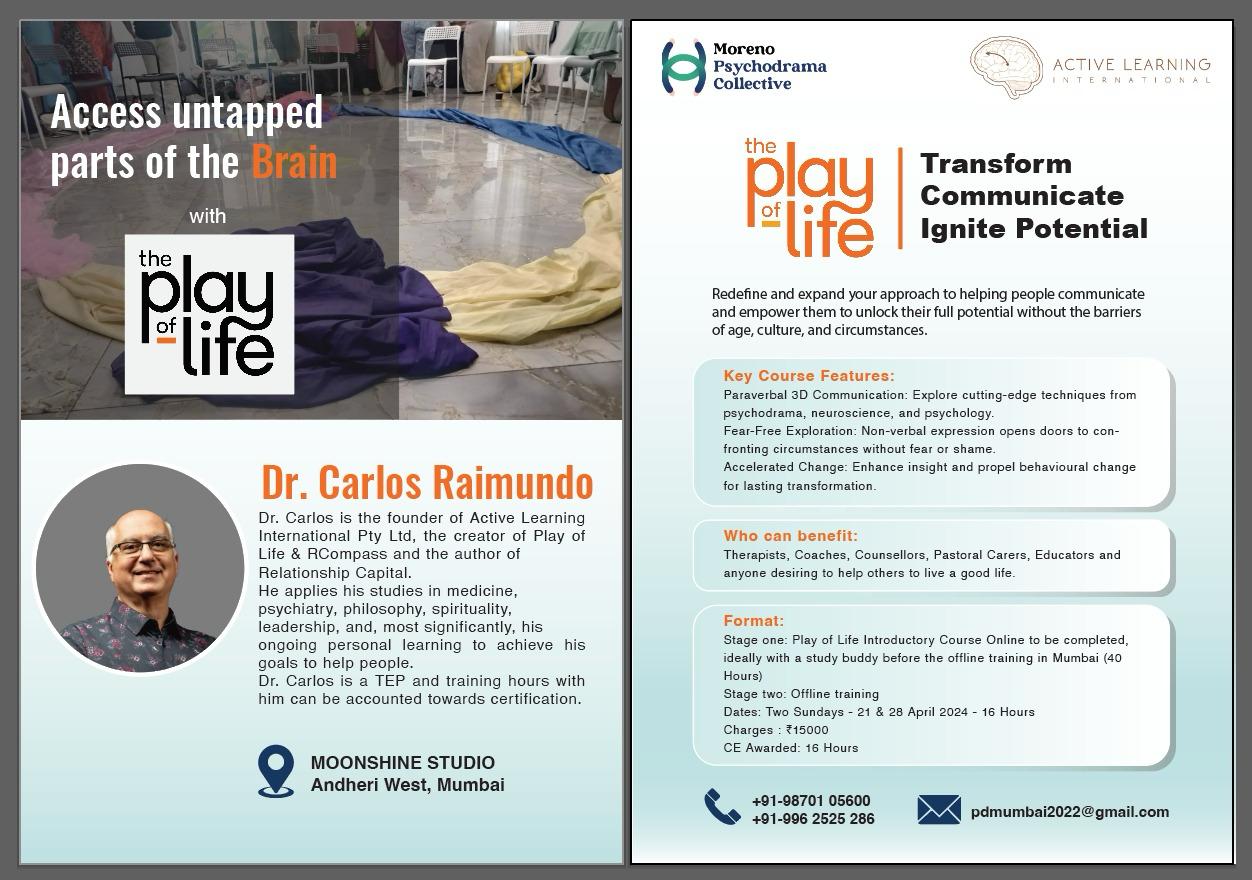In 1982, the Pillars of Life initiative began with the "Ministering to Ministers" program, utilising Psychodrama for pastors and ministry participants across Latin America. Despite verbally sharing glorious narratives of their faith journeys, a noticeable gap surfaced when individuals were asked to depict their lives on stage. This gap hinted at a stark difference between the narratives they projected and the authentic experiences they were privately grappling with – a disparity between the gloriously articulated stories meant for public consumption and “preaching” and the often challenging and exhausting realities they were internally navigating.
This realization prompted a critical question: how could these seemingly disparate narratives be connected and aligned into a more cohesive whole? What can I do as a psychodrama director? The answer came from the biblical account of the people of Israel crossing the Jordan River led by Joshua (Chapter 4). In this narrative, they were commanded to collect a stone from the river and create an altar as a remembrance of God's guidance and support throughout the desert after leaving the captivity in Egypt, serving as a lasting testimony for future generations.

Inspired by this biblical analogy, the psychodrama stage underwent a transformative metamorphosis into an altar. I recognised the need for a bridge between the gloriously portrayed tales and the underlying challenges, thought of a process known as Pillars of Life. This innovative approach aimed to authentically connect both aspects of individuals' narratives – the glorious and the challenging, the joyful and the miserable.
The Pillars of Life technique involves a symbolic journey for participants. They walk along the border of the stage, with one corner representing their birth and the opposite corner symbolizing the present. As they walked, they were guided to recall only memories filled with goodness and gratitude – moments that made them feel loved and cared for. The protagonist chooses one member of the group for each memory and tells them, by enacting it, what the message was, but played in the here and now and the tone of voice it’s heard. Briefly sharing each memory, they identify a significant message associated with that person or moment.
Following this, the protagonist, standing outside the stage, was prompted to select another person from the group and position them in the middle of the stage, evoking feelings of genuine distress, feeling bad. Then each person playing the memory is asked to repeat the message aloud. the protagonist observes from the outside, reconciling both the glorious and miserable aspects of their journey.
The pivotal moment comes when the protagonist takes the centre role and hears one by one of their messages. They were asked to identify which memory, “if heard and believed,” could help them move beyond that painful moment. Through role reversals and actions associated with positive memories, the protagonist begins to step out of their distress, as a response to the expressed messages from supportive memories.
This process is a collective experience, with observers also engaging in the narrative-building journey. The term "Pillars of Life" was chosen to encapsulate this transformative technique, as it better resonated than "Altar of Life."
During discussions, a pastor likened the experience to Philippians 4:8, emphasizing the importance of filling minds with things that are good, true, and praiseworthy. Dr. Jorge Leon invoked Viktor Frankl's Logotherapy as a parallel concept. Furthermore, neuroscience demonstrates that good memories and experiences of celebration and gratitude slips our memory like Teflon but memories of pain and suffering sticks like Velcro. Hence the recalling of good memories must be an active function of consciousness. Rabbi Jonathan Jacks in Not in God’s name argues that the word “remember,” is mentioned 352 times and 550 in its derivate so people (of Israel) do not forget God’s presence in moments of trials. The root of remember is to keep in mind or to be mindful, as “do not forget.”
The Pillars of Life has since evolved, becoming an integral part of the Play of Life methodology. In the Play of Life the participant walks, symbolically, using small figures or avatars in the digital version allowing those good memories to come to mind.
The Pillar of Life has been a foundational technique in various therapeutic processes, particularly in addressing trauma. This technique has been applied globally with refugees, creating a foundation that provides an emotional container. This container allows individuals to revisit memories of trauma and address them constructively, using the experience as a building block for restoring their lives, rather than continuing to carry the weight of pain and suffering. (Photo: Refugees from Congo and Sudan practicing the Pillars of Life in Albury-Wodonga, Australia)."
The Pillars of Life has a simplified version useful for moments of celebration such as birthdays, anniversaries, Christmas, New Year, etc, called “Ribbons of Celebration.”
The technique is further expanded with the incorporation of another technique, the Double Line History, showcasing remarkable effects in the healing process. This innovative approach stands as a testament to the power of narrative transformation, aligning with ancestral wisdom and psychological insights to create a holistic healing journey.
One indelible pillar in my life stands out — the memory of my father's prayer during the Christmas dinner in 1985. Despite the challenging circumstances, with my father battling diabetes and the country, Argentina, facing severe economic hardships, he radiated strength, gratitude and hope. My sister, Nelida, his beloved daughter, lived in Australia with her family, my brother Julian missed entering university, and I, his eldest son, and colleague prepared to depart for Australia with his grandchildren. Everything sounded gloomy, I wondered, what would he pray about? And amidst the gloom, my father's prayer unfolded with a cascade of gratitude, each phrase expressing profound thanks. It concluded with a heartfelt blessing. That prayer, a Pillar of Life, remains imprinted in my memory.




